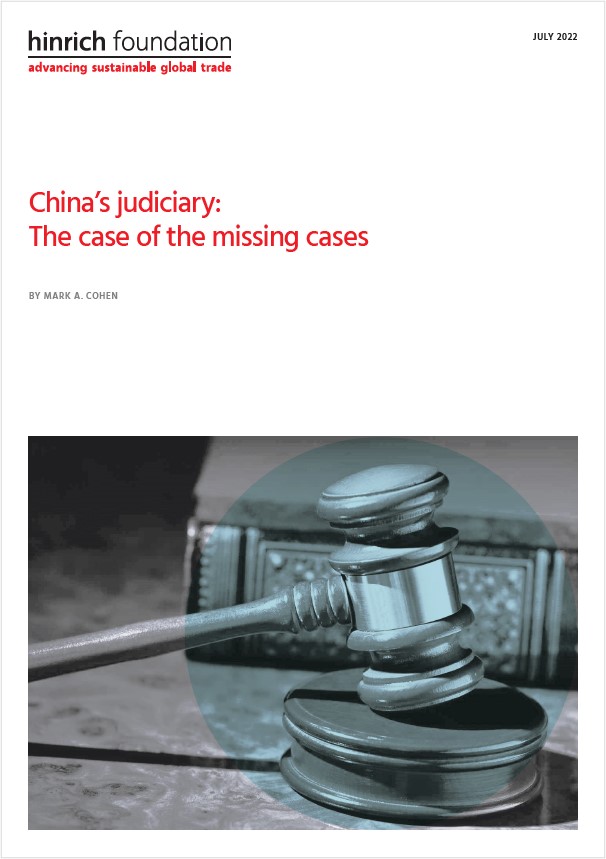Published 18 July 2023
China’s judicial database on its intellectual property litigation is often dismissed by analysts as aggressively curated, propagandistic, and rife with missing cases, despite providing valuable insight into the country's IP environment. For such data to be more credible, China needs to enhance its efforts at improving transparency, and scholars and practitioners need to be more candid about the Chinese system's limitations.
China has rich and diverse data sources on IP that derive from its long history of centralized state planning. The wealth of available information opens possibilities for legal scholars and practitioners mining the data and making comparisons among them.
But there’s a major problem: there are a lot of missing cases in China’s judicial databases. China currently has no counterpart to the US “PACER” system, which publishes all federal court dockets in their entirety subject to few limitations.
Chinese judicial databases do not mechanically make available all IP case decisions. Sometimes there are statutory reasons for non-publication of cases. Mediation and settlements are not published. Interim judicial decisions are also not usually made publicly available. A subsequent case settlement can cause a case decision to “disappear” from the judicial database entirely.
Even after discounting these practices and statutory exceptions, China’s judicial database is a more aggressively curated database than in the United States and other legal systems. Scholarly teams such as the one led by Columbia University Professor Benjamin Liebman, which analyzed China’s main publicly accessible litigation database China Judgments Online, or wenshuwang, noted that “digitizing documents offers an opportunity for censorship, and there is evidence that this happens...”
Moreover, analysts have cautioned that “legal scholars [should] … take the missingness problem seriously … rather than succumbing to the temptation to treat even a very large sample as an accurate reflection of reality.“ Professor Liebman’s note of caution has hardly been applied to scholarship on China’s IP regime, but it should be.
Nonetheless, rather than disregarding China’s data in its entirety, we should recognize it for its limitations. Estimating the extent of missing cases in many IP areas still provides valuable tools in determining how IP is handled in China. The public availability of a large cohort of IP disputes has helped support important new research on how the Chinese judicial system in IP operates, including its responsiveness to legal, technological, and economic changes.
In the last few years, the available data suggests foreigners not only generally win IP disputes of various kinds in China, but that they generally win at higher rates than Chinese litigants and are likely to receive higher damage awards.
But like much of China’s official data, gaps in comprehensiveness render these findings inconclusive. Foreign access to China’s IP data sources is often curtailed with restrictions based on user location and occasional data shutdowns.
Increased transparency in China’s legal system would have numerous positive outcomes, perhaps including a reduction in trade tensions. Intellectual property often is a pioneering area for Chinese legal reform. Additional transparency would contribute to better judicial decision-making, reduced corruption, and the development of the rule of law in China.
© The Hinrich Foundation. See our website Terms and conditions for our copyright and reprint policy. All statements of fact and the views, conclusions and recommendations expressed in this publication are the sole responsibility of the author(s).







